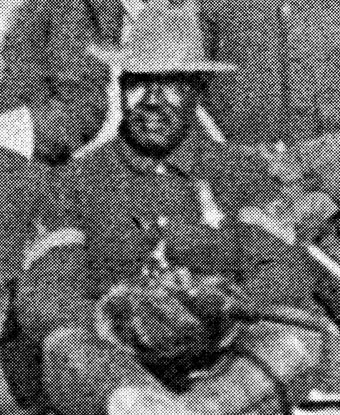Last updated: March 29, 2024
Person
George Jordan

U.S. Army
A Soldier's Soldier
George Jordan was born into slavery in 1847 in Williamson County, Tennessee. At age 19, he enlisted in the U.S. Army, assigned to the 38th Infantry Regiment. Three years later in 1869, the 38th Infantry would be grouped with the 41st Infantry to become the 24th Infantry Regiment. Jordan would eventually wind up with the 9th Cavalry Regiment as he made his way through posts in the southwest. Like many African Americans during that period, he was illiterate when he entered the service. Jordan proved to be dedicated to his unit and the Army and rose in rank to Sergeant by 1879. During his early years in the Army, Jordan learned to read and write which likely helped him in his ascension through the ranks. Jordan spent most of his 30 year career in the 9th Cavalry K Troop.While his citation reads mostly for his action at Carrizo Canyon, NM, he exhibited exemplary combat conduct on two occasions, both battling Indian forces during the Indian War Campaigns. The first action was on May 14th, 1880 at Fort Tularosa, NM where Sergeant Jordan, his men and the town citizens were surprise attacked by a band of more than 100 Apaches. Jordan and his men successfully fought back the invaders and saved the town and the town’s cattle. The second action occurred on August 12th, 1881 in Carrizo Canyon, NM. Jordan and his troopers were detached from a larger force when they were ambushed by Apache Indians. Sergeant Jordan and the 19 men under his command performed valiantly in combat and Jordan’s actions were responsible for repelling the attack, likely saving the company’s command from being surrounded and suffering further casualties. The citation for Sergeant Jordan reads as follows: While commanding a detachment of 25 men at Fort Tularosa, N. Mex., repulsed a force of more than 100 Indians. At Carrizo Canyon, N . Mex., while commanding the right of a detachment of 19 men, on 12 August 1881, he stubbornly held his ground in an extremely exposed position and gallantly forced back a much superior number of the enemy, preventing them from surrounding the command.
Sergeant George Jordan retired from the Army in 1896 at Fort Robinson, Nebraska. Afterwards, he became a successful land owner in the Fort Robinson area. By 1904 Jordan’s health was declining and he attempted to get medical care at the Fort Robinson hospital. As was the case with many African-American veterans, he was denied entry into the base hospital. Jordan would die shortly thereafter from his medical conditions. A complaint by the post Chaplain noted that Jordan “died for the want of proper attention.” Sergeant George Jordan was buried in the Fort Robinson cemetery where he received a funeral with full military honors.
Despite the appaling circustances surrounding his death, George Jordan's name and legacy as a Buffalo Solider Medal of Honor recipient live on. During WWII, an Army facility was named after Jordan, Camp George Jordan in Seattle, Washington. In 1999 the Army’s 6th Recruiting Brigade in North Las Vegas, Nevada named their new headquarters building after Sergeant George Jordan.
